photo by Deborah Benham
article by Root Cuthbertson 2023 ![]()
part of a series on Regenerative Design Principles
“Life is a symbiotic and cooperative union that allows those who associate to succeed.” -- Lynn Margulis
Caution: Hazard! If you were raised in a westernized society, it may be easy to assume that competition, not cooperation, is the baseline or norm everywhere. This has happened a lot. While competition does play a role in living systems, its role may have been over-emphasized -- possibly by those who misinterpreted Darwin's evolutionary theory (consciously or unconsciously). This may have been part of a worldview that reinforces dis-connection and separation (consciously or unconsciously). Such a worldview can affect everyone, even those aiming to explore and describe living systems – even the author who is telling you this now! A more regenerative worldview might consider competition alongside cooperation. While in the past, in many places, any focus on cooperation may have been considered politically dangerous, radical, or controversial; this article intentionally uplifts cooperation. What if, in living systems, cooperation were viewed as the baseline or the norm? And what if competition were viewed as a strategy used more rarely, or only when necessary?
One of the basic lessons of 20th-century ecology is symbiosis. It is often simplistically described as a relationship between two organisms that can either be:
( + / -) positive for one and negative for the other (parasitism)
( + / 0) positive for one and neutral for the other (commensalism)
( + / +) positive for both (mutualism).
This article focuses on mutualism, when both organisms benefit from a relationship, which is one important way that cooperation happens in living systems. There are plenty of examples of inter-species and same-species mutualism. This article describes mostly inter-species relationships and gives a few same-species examples; same-species teamwork is covered in a separate article (see 1-3 Collaborative Teams).
In living systems, mutualisms are remarkably common; some researchers believe that every organism, at some point in their life, is involved in a mutualism.
Same-species cooperation
On the cellular level, Egbert Leigh described cooperation occurring within a genome, what he calls a “parliament of genes.” Sometimes, when a small “cabal of selfish genes” arises and seeks to dominate the genome, a counteracting and larger “commonwealth” of genes will cooperate to actively suppress the selfish genes. While in this example Leigh's 1971 worldview is very much based on competition, it is noteworthy that he included cooperation at the genetic level. (This was during a time when many scientists believed that “unlocking the genetic code” would provide illuminating answers. It did not: when the human genome was fully de-coded in 2022, it provided only more questions.)
On the microbial level, bacteria cooperate in a incredible number of ways. Keep reading to learn about some of their most mind-boggling behaviors. In same-species populations, bacteria can cooperate by "quorum sensing," often coordinating a response to their environment to conserve their efforts. For example: making certain products ("common goods") is only worthwhile to do collectively, when a "quorum" of bacteria is present. Bacteria can "sense" whether their population is too low, and suppress that activity; and they can also sense when their population is sufficient for that activity to be beneficial for the entire population.
“Crown-shyness” is a curious and not-yet-well-understood form of cooperation among trees. While this can happen between species, it is definitely observed in same-species populations. While growing to an optimum height, trees ensure enough space between themselves, so that their highest parts do not touch: their “crowns” are “shy” of each other. There is often a distinct gap between trees growing near and next to each other. No one knows exactly why this happens. Theories include: a cooperative sharing of sunlight with plants closer to the ground; ensuring rainwater falls in ways that tree roots can easily access, or that prevents problematic soil erosion; ensuring that the wind is channeled between trees so as to prevent harm to branches. Science fiction author Becky Chambers suggests that older trees may even be consciously saving space for younger trees to grow up into. While this may seem fanciful, what if trees were actually cooperating in this way? What if a worldview based on competition was preventing us from seeing how cooperative trees can be?
“Buffering” is another common form of same-species cooperation. During times of plenty, a group cooperates to set aside a stash of resources to share during times of shortfall. For example: ants may store and share food within a colony; plants may store and share nutrients via their root systems.
Inter-species cooperation
Root systems are involved in one of the biggest and most widespread forms of cooperation ever. It occurs in every terrestrial biome on the planet, and is the result of one of the greatest evolutionary events in the history of Life. A cooperation between fungi and plants, which began around 470 million years ago, enabled plants to colonize pretty much all land on Earth. Fungi share an underground network called “the mycelium,” which allows connection and communication over vast amounts of land area. Plants, by sharing some of the sugars they produce, can tap into this network via mycorrhizae in their roots: structures which allow cooperation between a plant and the world-wide fungal network in the soil. An estimated 80% of land plants rely on their cooperation with fungi to provide certain inorganic compounds and trace elements. Because of this long-standing relationship, and access to this network, plants are also able to cooperate with each other, sending messages, information, nutrients, or support.
Another root-based kind of cooperation is the "rhizome" that forms between leguminous plants and rhizobia bacteria. The bacteria take nitrogen out of the air and produce ammonia, which the plant can absorb. Within a root-nodule, the plant provides shelter and protection for the bacteria, and may share other beneficial nutrients like water and oxygen. Plants can also restrict access to such nutrients from bacteria who aren't holding up their end of the bargain; and may likewise reward bacteria who do.
Lichens are a form of cooperation between a fungus and a sugar-producing photosynthesizer, usually a green alga or a cyanobacteria. In exchange for sugars, the fungi provide water retention and increased surface area. About 20% of all known fungal species form cooperative associations like this, with one or both species dependent on the other for survival (see 1-5 Interdependence).
Peter Wohlleben describes tree friendships, which can be same-species or inter-species. Trees prefer not to be alone, and typically reach out and form cooperative relationships with their neighbors. Trees can cooperate by growing supportively, or making space for each other, sharing sunlight, or providing underground nutrient support via their mycorrhizal connections. In tropical forests, they may share or channel rainwater; they can coordinate the release of water vapor at certain times in order to create fog or clouds; tree branches can provide a habitat for rain-catching epiphytes and their associated tiny aquatic plants. In temperate forests, ground moss may cooperate by supporting tree seedlings, reducing stress, cleaning water, and enhancing their likelihood to develop fully. In boreal forests healthy trees may support those damaged by frost. In the Sonoran desert, young saguaro cacti rely on the shade and moisture provided by neighboring 'nurse trees' (often palo verde or mesquite).
Several kinds of gut bacteria cooperate symbiotically with their hosts, in relationships that, in some cases, have been ongoing for 150-200 million years. Aphids receive several essential amino acids; termites get help digesting cellulose; and nematode roundworms are mutually interdependent with their bacteria – one cannot exist without the other (see 1-5 Interdependence). The human gut microbiome relies on a cooperative relationship with a collective of bacteria including E. Coli. Simo and Massana add: "Humans are in close cooperation with millions of microbes that inhabit the stomach, the mouth, the skin, and that carry out tasks essential to our health."
Clownfish and sea anemone have a three-way mutualistic cooperation with an alga that lives in the sea anemone's tentacles. Waste ammonia from the clownfish feeds the algae. The clownfish actively defend the sea anemone from being eaten by butterflyfish. And because the clownfish have developed an immunity to the tentacles' sting, the sea anemone provides the clownfish protection from predators.

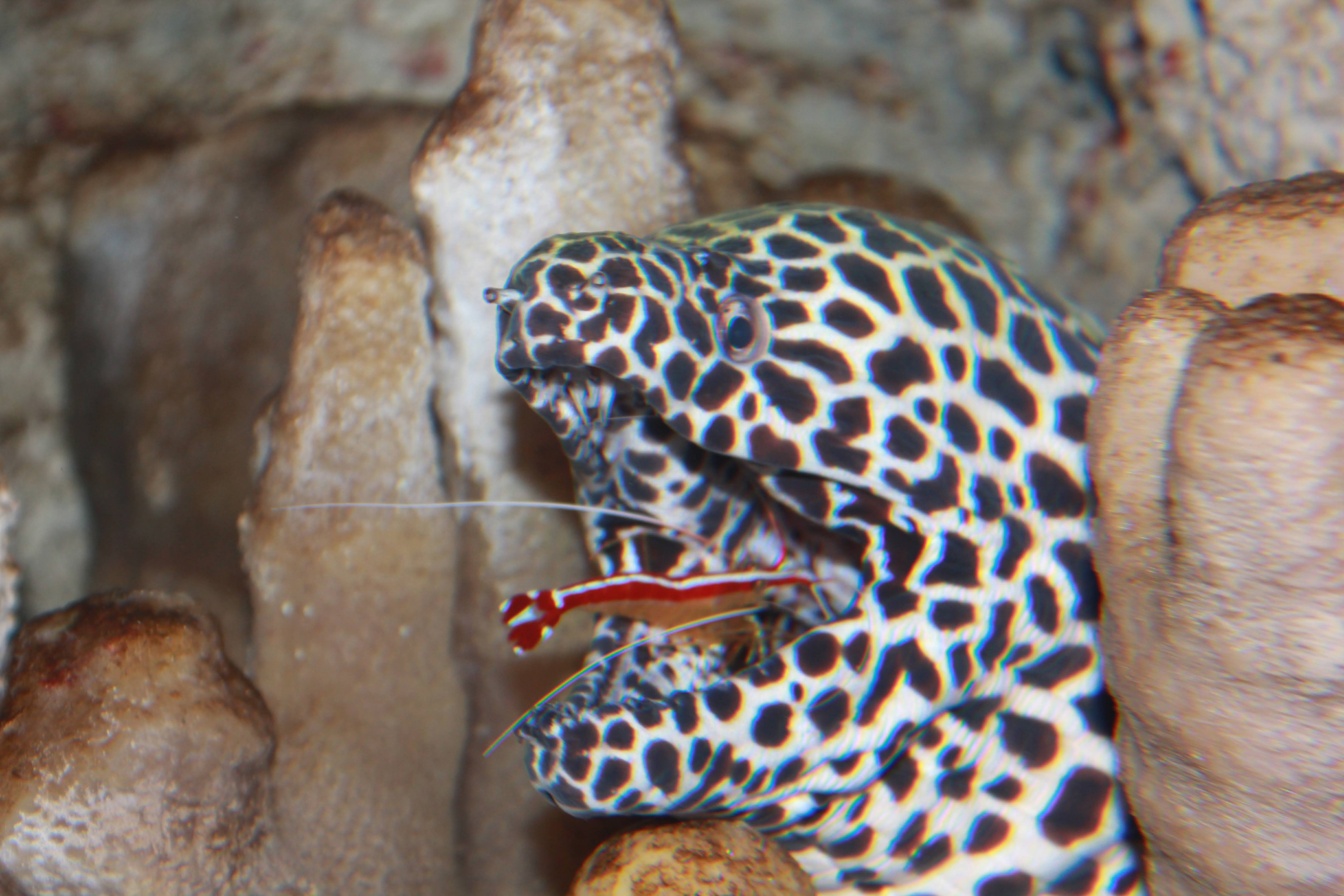
Clownfish and sea anemone photo by Unrealimages (AI) Moray eel and cleaner shrimp photo by Deborah Benham
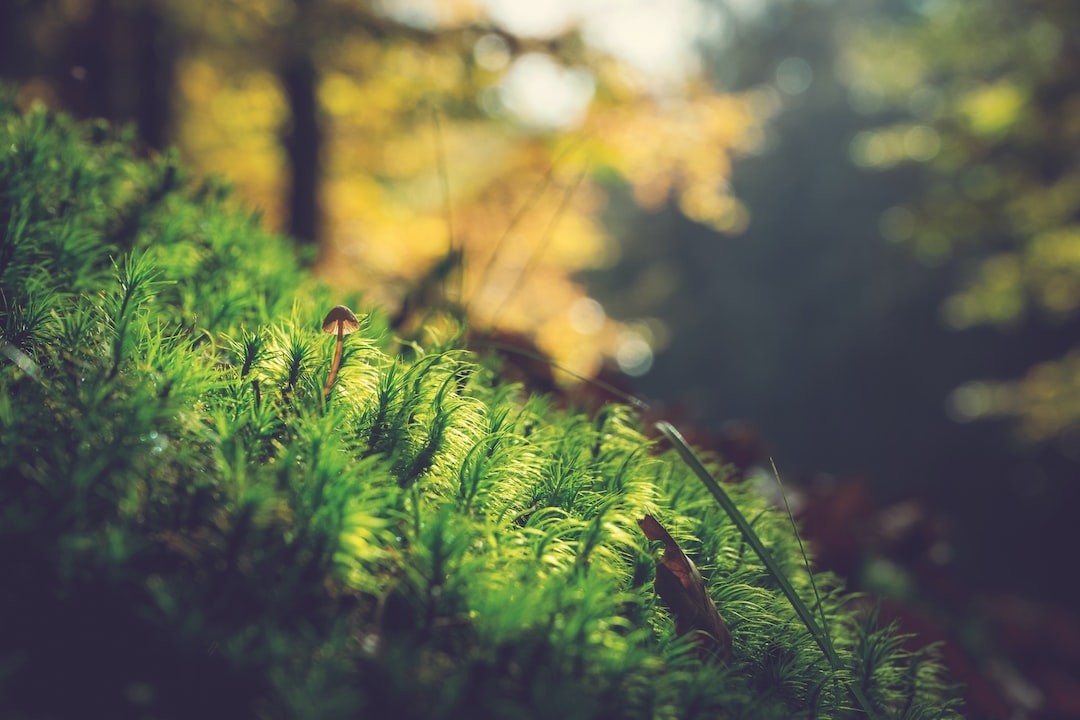
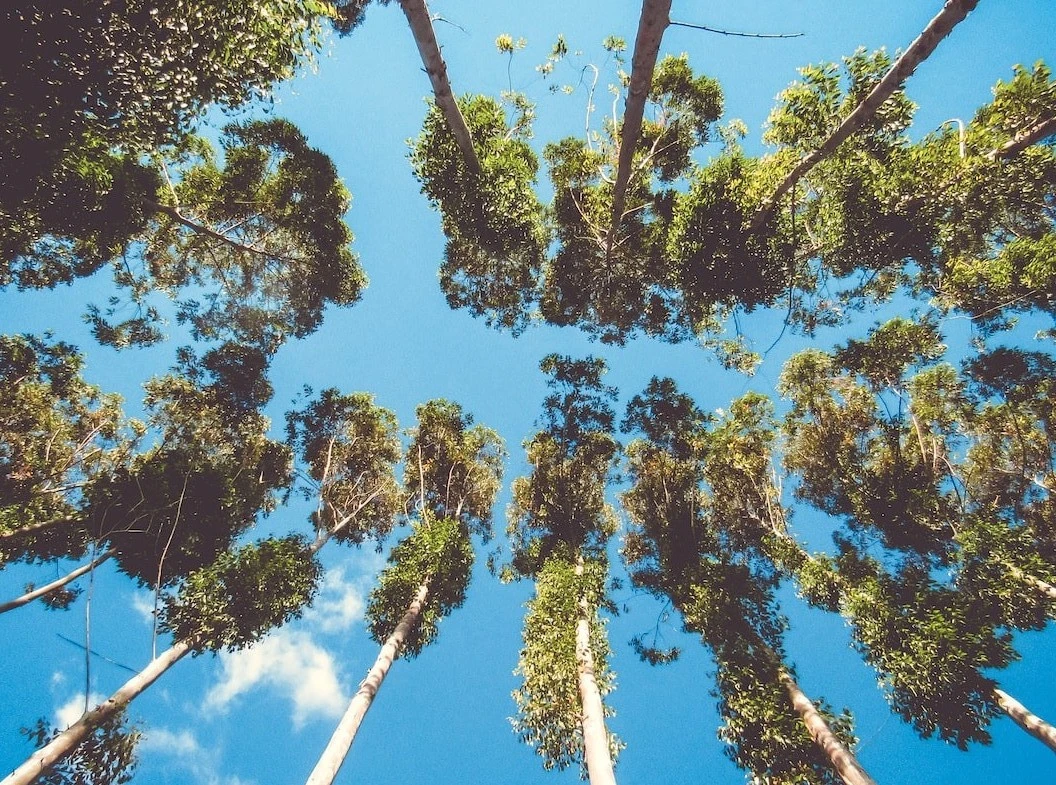
Forest moss photo from Forrento Crown-shy trees photo by Vinicius Henrique
Ants protect tiny aphids from predators like ladybugs, in exchange for a sugary taste of the honeydew aphids make as a by-product of feeding on plant sap. Ants also cooperate with fungi by actively promoting one strain inside their nests that provides useful resources, and actively removing others that are incompatible.
Bird alarm calls, indicating that a predator in nearby, benefit other same-species birds, as well as any other species who can hear and interpret the alarm calls, including humans.
Cleaning is a paired form of mutualistic cooperation seen in several species – oxpecker birds with zebras; wrasse cleaner fish with salmon; cleaner shrimp with moray eels; plover birds with crocodiles. The cleaner receives a source of food; and the host benefits by having unwanted debris or pests removed.
Some researchers view herbivory by grazers as a form of mutual cooperation. The animal receives a source of food; the plant, while being temporarily cut back, is stimulated to re-grow and often over-compensates to produce more biomass. Entire prairie and grassland ecosystems, covering enormous areas, have evolved around the peregrinations of grazing herd species (like aurochs, cows, horses, bison, wildebeest).
Another widespread form of mutualistic cooperation is between a multitude of flowering plants and their animal pollinators. Astonishingly, plants and pollinators form cooperative networks with very similar patterns and structures (see 1-7 Networks), even in different ecosystems, on different continents, with entirely different species. Often these networks minimize competition between pollinators, reduce harm in several ways, and enhance ecosystem stability, especially when conditions are harsh. Many of these cooperative relationships are old enough that the plant and animal have come to rely upon each other. They are responsible for the co-evolution of distinctive flower shapes and the corresponding (sometimes unique) animal forms that allow them access.
Characteristics of cooperation
Long-standing cooperative relationships often lead to co-evolution: when different species adapt and evolve alongside each other to facilitate continuing a mutually benefical relationship. These relationships may be the drivers of the evolution of many forms of biodiversity. For example: the particular shape of the proboscis and length of the tongue of the hummingbird-moth allows it to feed on certain flowers with a long tube-like shape. Those flowers have evolved their shape in order to encourage pollination by that moth, and to discourage other shorter-tongued pollinators. Some flowers are so specialized and co-evolved that there is now only one specific pollinator that can access that flower (see 1-5 Interdependence). Other flowers may take a more general approach, allowing for a variety of pollinators.
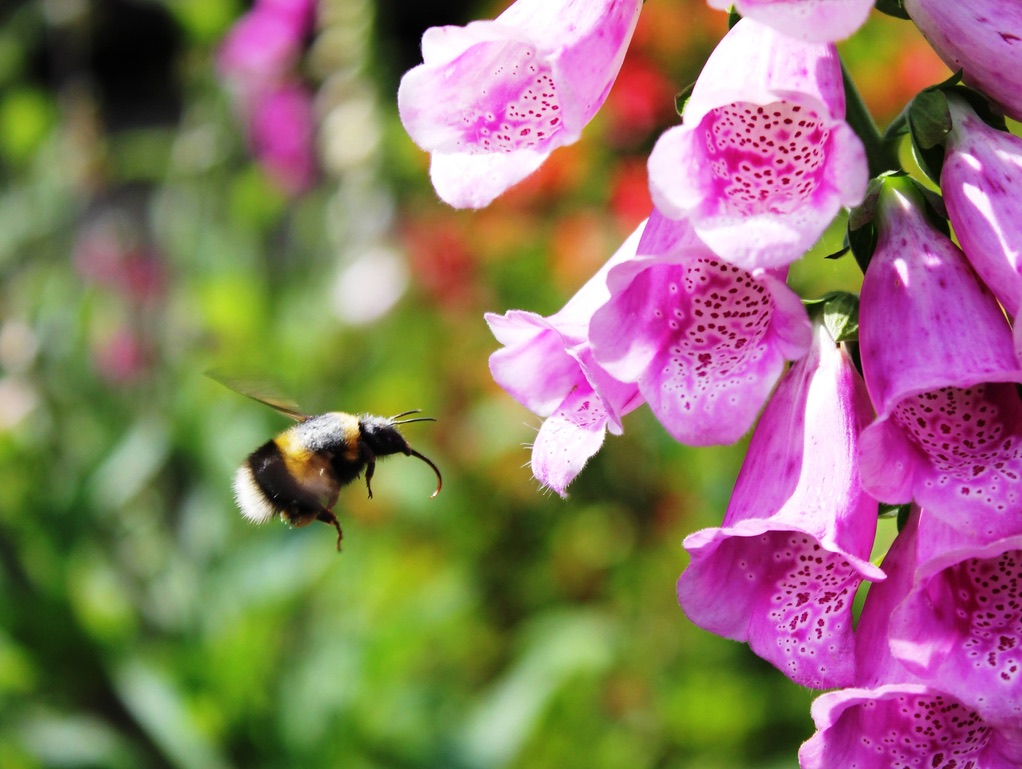
photo by Deborah Benham
Sometimes a network co-evolves, with populations of several species cooperatively interacting. In a field of red and white clover, honeybees (with shorter tongues) visit white clover (with shorter tubes), and bumblebees (with longer tongues) visit red clover (with longer tubes). Since these four species are often found in similar habitats, they can benefit from cooperating. If one patch of clover fails for some reason, the bumblebees might follow honeybees who have found an alternate patch of clover nearby.
Mentioned earlier in this article are several examples of protection and resource-sharing, which are common forms of cooperation. These will be affected by dynamics in the ecological context – harshness of conditions, scarcity or abundance of resources, level of competition for resources – and by aspects of the groups involved – size, reliance on a particular resource, or ability to store resources long-term. Groups may be more likely to cooperate when conditions are harsh (sharing body heat in cold conditions); or when facing a common threat (large inter-species herd migrations to reduce vulnerability to predators). Groups may be less likely to cooperate if resources are scarce (water in the desert); or if they are feeding a large family.
Robinson and Barker distinguish cooperation from tolerance, which is a temporary expansion of the 'in-group.' Some groups will cooperate temporarily to face a shared threat together, which can increase tolerance for a limited time.
“The benefits of cooperation arise simply from having more individuals contribute. For example, multiple ant nests combine defensive activities when any one of the nests faces the threat of echidna predation. External threats can promote inter-group cooperation when groups have some degree of shared interests or interdependence." -- Robinson and Barker
Robinson and Barker also describe "identity effects” in both within-group and between-group cooperation. For example: social insects like ants, organized with several nests belonging to the same colony, can distinguish at least three levels of identity: nest-mate, colony-mate, and outsider. When cooperating, ants can discriminate between these levels to show favoritism to those with the most similar identity. In groups with stronger identity effects, inter-group cooperation is often less likely. In groups where identity is more fluid, and changing group membership is a possibility, inter-group cooperation may be more likely. Such groups may even exchange members as a form of cooperation. Individuals with multiple identities, who can be a member of more than one group simultaneously, tend to show more tolerance toward non-members or outsiders.
This is an important idea: being able to distinguish the identity of group outsiders from insiders. Historically, among humans, perceived differences in identity have been used to promote intolerance, oppression, slavery, and genocide. Even where populations are geographically, linguistically, and ethnically similar, human groups still make fundamental distinctions in identity between themselves and the people in the next valley, or across a neighboring river, or over a nearby mountain. If you are not one of us, you must be an outsider – and possibly an enemy. Insiders are typically treated preferentially or uplifted; while outsiders are typically treated unfairly or disparaged. There are many human stories about insiders becoming tolerant of outsiders, and eventually being willing to cooperate with them. Some are cautionary tales with unpleasant outcomes (“see what misery happens when you interact with those people.”); and sometimes the story ends favorably, much to everyone's surprise. Humans in westernized societies, by and large, have a dim view of cooperation. Usually it can only succeed in limited circumstances, among insiders (“you can only trust family”); and cooperation with outsiders is seldom expected to be successful.
Reciprocity is a form of cooperation seen in several social species, including humans, where individuals mutually exchange with each other, mirroring the positive or negative nature of the interaction. Robinson and Barker suggest “Humans typically expect reciprocity to occur with in-groups only (‘bounded generalized reciprocity’), and thus expect benefit from cooperating with in-group, but not out-group, members." Individuals are more likely to be cooperative with those who act cooperatively towards them (or who have a reputation of being cooperative). Different species can take different time periods to reciprocate an action, it might be short or long-term: a tree might have a longer-term view than a bacterium.
Direct one-to-one reciprocity can be embedded in a long-term relationship (like an adult child caring for an elderly parent; or a flower and a pollinator cooperating). In one-to-many and many-to-one (like rotating hosting a supper club, or a bridal shower, or a barn-raising) reciprocity is also direct: the beneficiaries are identified, and contributors know exactly what they can expect in return. When group membership is fluid, or can change easily, this can become less predictable or defined (who is a bride next? who needs a barn next?). Reciprocity can also be indirect: it can follow a long chain of exchanges -- in which A gives a benefit to B, who passes on a similar benefit to C, and so on -- each party expecting that if they contribute, they will eventually receive benefit. In a large network (like a fungal mycelium), members may contribute without any specific expectation other than the continuation of the network itself, investing in "benefit for the common good."
Reciprocity is most easily understood (by folks raised with a westernized worldview) as an exchange between individuals with a shared identity. So what happens when individuals can have multiple identities, belonging simultaneously to distinct groups? And what happens when it's not so clear whether someone is a group insider or an outsider? Or when a superordinate identity (regional or national) becomes more important than a subordinate one (municipal, local)? (In sports this happens when the best players from – usually competing – municipal teams are asked to cooperate to form a national team for a special event like the Olympics). This relates to the principle of Nestedness: how individuals in living systems always have both local and regional, micro and macro identities at once (see 1-2 Nestedness).
Margulis and Mutualism
This blurring of the lines that distinguish identity is the basis of Peter Kropotkin's 1902 concept of mutual aid. Writing within the context of the Russian revolution, Kropotkin was initially dismissed (as an outsider) by many westerners who found his ideas either alien or dangerous. Only later was he credited for anticipating key biological concepts like mutualism and altruism. He was rejected at first, because the idea that individuals can contribute to benefit each other, and the larger collective to which they all belong (sometimes with no apparent immediate benefit to themselves), contradicted prevailing neo-liberal capitalist views. Any idea that originated with socialists, Marxists, Leninists, or anarchists (outsiders), was suspect. Anyone who uplifted such ideas was labelled radical, contrarian, or ridiculous.
Throughout her career, biologist Lynn Margulis was labelled all of these, since her ideas challenged the prevailing neo-Darwinist views of the time. Inspired by Kropotkin (among other outsiders), many of her theories, initially considered heretical, have since been substantiated and are now accepted as mainstream. She asked: what if the basis of evolution and speciation were cooperation, not competition? How would we view the world differently? As designers, how could we begin to re-imagine human social systems that emulate the bacteria who began successfully cooperating millions of years ago, and continue to this day? What can we learn from some of the simplest forms of Life on the planet?

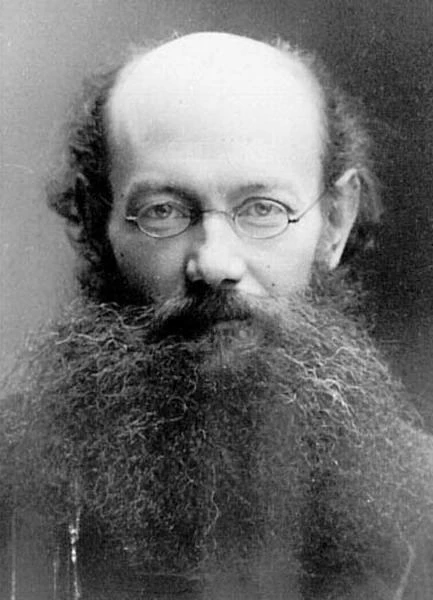
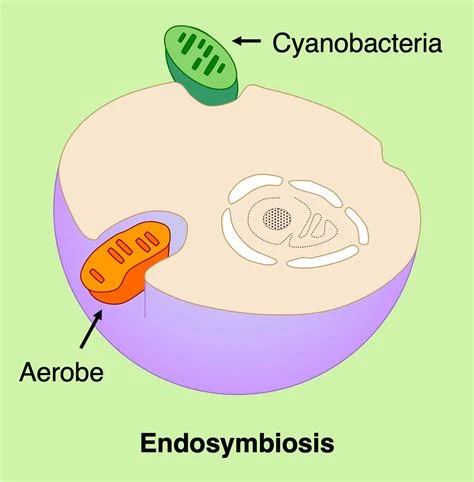
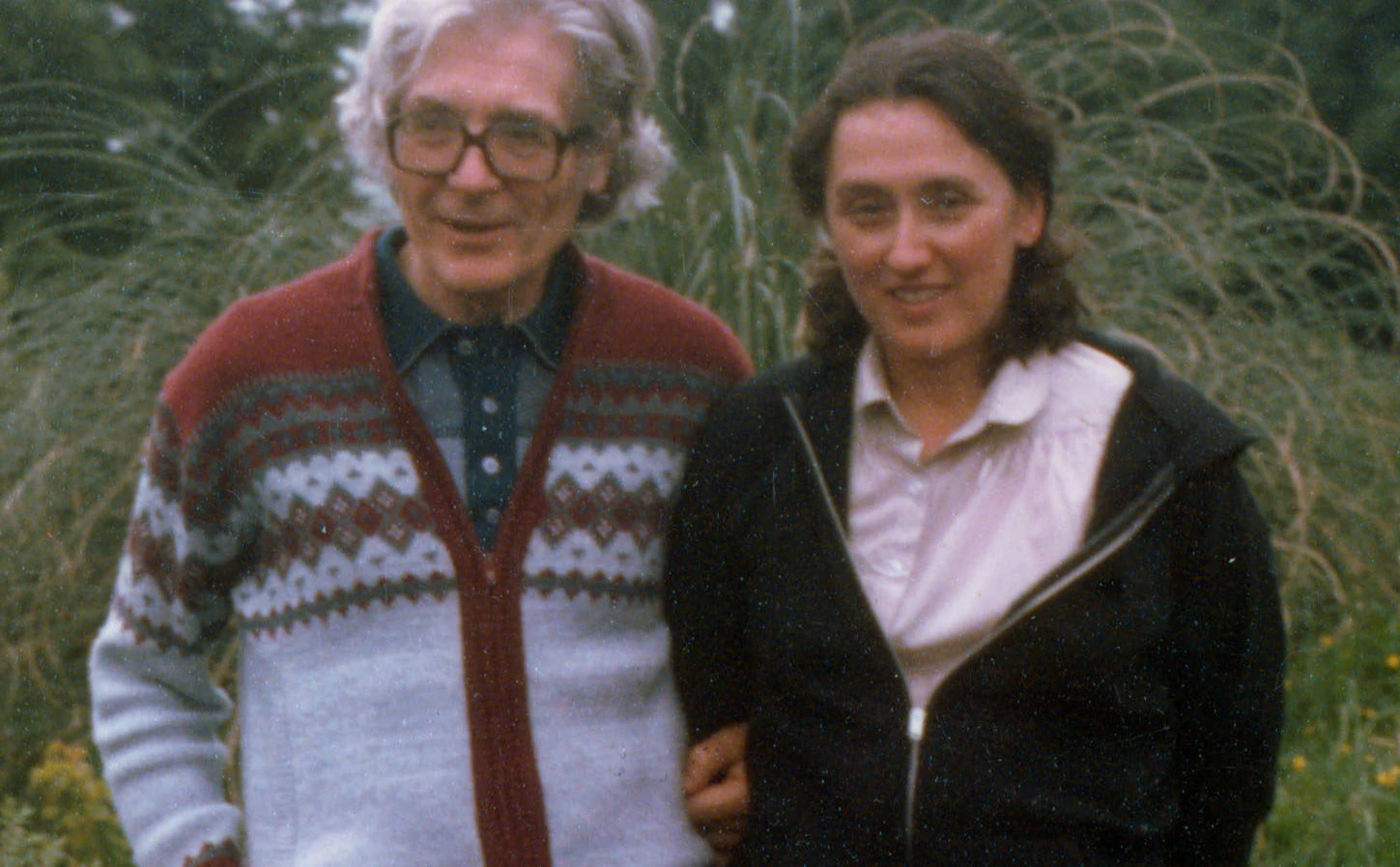
Lynn Margulis Peter Kropotkin Endosymbiosis 3 by BioNinja James Lovelock and Lynn Margulis by Hummingbird Films
Margulis suggested – and proved – that bacteria can employ (and have for millions of years) a transformative form of cooperation called fusion. This happens when two or more distinct bacteria – often with very different characteristics from entirely different species – integrate to form a new entity. Simo and Massana report that “a fusion of four types of bacteria generated an evolutionary leap, since they could do together what they could not separately." All multicellular Life is based on this bacterial capability to cooperate. The evidence is found within important organelles that manufacture sugar within every plant cell (plastids) and energy within every animal cell (mitochondria). These organelles retain their own DNA, reproduce independently, and have a double membrane. Once upon a time, they were independent bacteria that were ingested, and, instead of being digested, they were incorporated into the biology of our ancestors' bodies. Margulis hypothesized that this cooperative pattern is how all Life evolves, and how most new species come to exist. She thought it would make sense for the pattern to hold true at both the micro and macro levels, and that it may even explain several unsolved mysteries, like evolutionary leaps, 'random genetic mutation,' and observations of bizarre interactions.
Margulis enjoyed collecting such observations, using them to discredit neo-Darwinist theories based on competition. “Well, if your theory is true, then how do you explain this?” she would say. For example: bacteria can reproduce in a variety of ways, both by simple cell-division (asexually) and by exchanging some of their DNA (sexually). They do not have true species separation, since they can (and do) exchange DNA with any other bacteria regardless of species. If they are not truly separate species, then bacteria cannot become extinct; so the definition of extinction may not even apply to bacteria. They may instead cooperate, fuse, and co-evolve into a new form. Margulis observed that, cooperating with algae, protozoans, and fungi, bacteria can form extensive mats and matrices, often visible for miles along a continental coastline. Following this logic, if all bacteria on the planet can interact and exchange, then we could view all bacteria as belonging to a single species, or even a single super-organism.
The Gaia hypothesis, co-created by Margulis and geo-chemist James Lovelock, suggests a planetary form of regulation based on the cooperation of many individual partners. Often misinterpreted by detractors as a utopian vision, its science is firmly based on Margulis' theories. If single-celled organisms can cooperate in planet-wide associations; if inter-species cooperation is an observable characteristic of many living systems; then it is not much of a leap to imagine the planet itself as a living system, or even a super-organism. Its various biomes and habitats can be viewed as its organs (forests as lungs, water-cycle as circulatory system), and individuals like cells within those organs. This view would align with the principle of Nestedness: all forms of Life viewed as cooperative partners, collective members of one living planet. For neo-liberal capitalists, ultra-nationalists, and fundamentalists, this is a dangerous idea, allowing local identity to be superseded by a planetary identity. If difference – that driver of competition – is a fiction, it calls into question the basis of the entire worldview of separation.
Designing with Cooperation in Mind
As designers, the principle of cooperation invites us to consider more needs-based approaches. If we release the basic assumption that everyone must compete for scarce resources (and all its associated patterns), we can begin with an alternate set of assumptions. The Earth has an abundance of resources. There is enough, and sometimes plenty, for all. Everyone can share in the bounty. Everyone deserves a share, even those who are different or viewed as unpleasant. Everyone can get their needs met. Peaceful coexistence (or at least tolerance) is possible. This may involve cooperation via resource-sharing, or re-distribution, or taking turns. A cooperative design can help get everyone's needs met. A shift toward more cooperative mindests, attitudes, and behaviors, will help too.
More cooperative attitudes and behaviors make sense in a world of living systems that are both Nested and Networked (see 1-2 Nestedness; see 1-7 Networks). As designers, we are wise to keep in mind the many ways that living systems interlink and interact. We can learn a lot from our bactierial ancestors, and our many present-day symbionts. In the past, cooperation has affected the entire planet, and may play an impotant role in the future as well.
Questions to consider:
In your context, what old habits, patterns, or beliefs might be obstacles to cooperating? For you personally? For other folks in your area? How might you approach changing those old habits, patterns, or beliefs?
In your area or context, how does reciprocity look now? What patterns of exchange already exist? How might you reference those, or build on them, to encourage more cooperation or reciprocity? How might reciprocity look in the future?
In your context, how are insiders (group members) treated differently from outsiders? Are there any examples of outsiders who have become insiders? If so, what was involved in that process? If not, what would a pathway toward membership look like? How could an outsider become an insider?
In your context, how is identity fixed? How are people expected to mostly keep the same identity for much of their lives? How is identity fluid? How can people change their identity, or have multiple identities?
How might you introduce – to someone who is having some resistance – the benefits of cooperating with people who are outsiders, or who have a different identity?
In your context, when in the past has it made sense to cooperate with 'others' to work toward the 'common good?' What circumstances or conditions led to such cooperation? How might it happen again?
References
Berdugo, M.B., Dovciak, M., Kimmerer, R.W. et al (2023). “The Roles of the Moss Layer in Mediating Tree Seedling Environmental Stress, Mercury Exposure, and Regeneration in High-Elevation Conifer Forests.” Ecosystems 26, 909–923 (2023). https://doi.org/10.1007/s10021-022-00806-0
Chambers, Becky (2022). A Prayer for the Crown-Shy. Tor
Kropotkin, Peter. (1891, 1902, 2006). Mutual Aid: A Factor of Evolution. Dover Publications.
Leigh, Egbert (1971). Adaptation and Diversity. https://www.statedclearly.com/videos/genetic-conflict-and-the-parliament-of-genes/
Logan, Paul (2022). "Symbiogenesis: The fringe belief of cooperative evolution." https://laulpogan.substack.com/p/symbiogenesis-the-fringe-belief-of
Margulis, Lynn (1981). Symbiosis in Cell Evolution. W.H. Freeman.
Margulis, Lynn and Dorion Sagan (1986). Origins of Sex: 3 Billion Years of Genetic Recombination. Yale University Press.
Margulis, Lynn and Dorion Sagan (2002). Acquiring Genomes - A Theory of the Origin of Species. Basic Books.
Nanyang Technological University blog (2021). "Lynn Margulis." https://blogs.ntu.edu.sg/hp3203-2021s2-u09/home/
Robinson, Elva and Jessica Barker (2017). "Inter-group cooperation in humans and other animals." Biology Letters, March 2017 Volume 13, Issue 3 https://doi.org/10.1098/rsbl.2016.0793
Rodeck, Salome (2023). "Symbiotic Worlds. Theories and Practices of Coexistence in Lynn Margulis and Donna Haraway." https://www.mpiwg-berlin.mpg.de/research/projects/symbiotic-worlds-theories-and-practices-coexistence-lynn-margulis-and-donna
Simard, Suzanne (2021). Finding the Mother Tree: Discovering the Wisdom of the Forest. Knopf.
Simó, Rafel and Ramon Massana (2021). "When we learned that competition was not the only driver of evolution." https://www.icm.csic.es/en/news/when-we-learned-competition-was-not-only-driver-evolution
West, Stuart, Griffin A, Gardner A (2007). "Evolutionary Explanations for Cooperation." Current Biology Volume 17, Issue 16, 21 August 2007, Pages R661-R672. https://www.sciencedirect.com/science/article/pii/S0960982207014996
Wikipedia. "Cooperation – Evolution." https://en.wikipedia.org/wiki/Cooperation_(evolution)
Wikipedia. "Microbial Cooperation." https://en.wikipedia.org/wiki/Microbial_cooperation
Wikipedia. "Mutual Aid (Social work with groups)." https://en.wikipedia.org/wiki/Social_work_with_groups
Wikipedia. "Mutualism – Biology." https://en.wikipedia.org/wiki/Mutualism_(biology)
Wikipedia. "Reciprocal Altruism." https://en.wikipedia.org/wiki/Reciprocal_altruism
Wikipedia. "Reciprocity – Social Psychology." https://en.wikipedia.org/wiki/Reciprocity_(social_psychology)
Wikipedia. "Reciprocity – Social and Political Philosophy." https://en.wikipedia.org/wiki/Reciprocity_(social_and_political_philosophy)
Wikipedia. "Solidarity." https://en.wikipedia.org/wiki/Solidarity
Wikipedia. "Symbiosis." https://en.wikipedia.org/wiki/Symbiosis
Wohlleben, Peter (2016). The Hidden Life of Trees. Greystone Books.
Root Cuthbertson
loves dancing, music, poetry, public libraries, matching needs with resources, monofloral honeys, generously inclusive humor, and stories about healing and hope. He has studied social change movements, comparative religion, needs-based approaches, de-colonization, and liberation for all. He holds a Master’s Degree in Environmental Education, and certificates in Sustainable Curriculum Design, Participatory Facilitation, and Ecopsychology. A certified trainer in Gaia Education eco-social design, Root designs experiential opportunities for learning by creating strong containers for the graceful facilitation of group energy. With his wife Deborah Benham, he has delivered trainings on Sociocracy, Culture Repair, and the Connection 1st online courses: “Introduction to Regenerative Community Building,” “Designing for Peace,” and "Pathways to Village Building.” Former Training Coordinator for Transition Network, he is the co-author and curator of collections on Personal Resilience, Conflict Resilience, Group Culture, and Social Justice. With Jon Young and Deborah, he is co-authoring a series of e-books on regenerative community design. With his ear to the ground, Root’s guiding question is: “What is most needed here now?”
![]()

